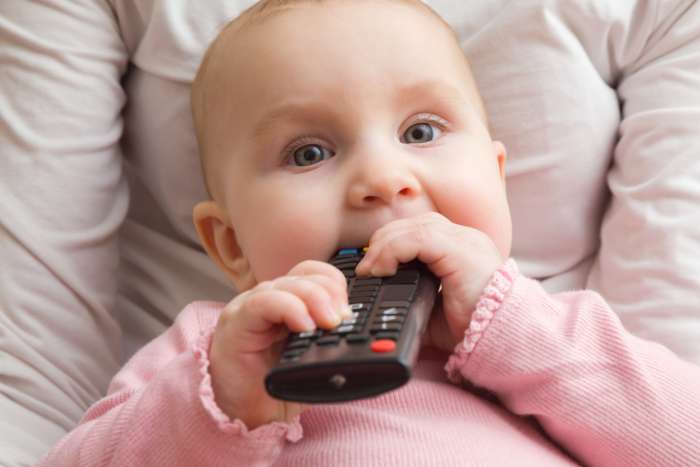Every parent wants to protect their children from harm and keep them safe. When babies start to crawl and toddlers begin running around the house, they will likely find things to put into their mouths.
Therefore, it’s important to be aware of the hazards and risks in your home so you can babyproof it effectively. Button cell batteries, also called coin cell batteries, are small and seemingly harmless objects but if ingested, they can cause devastating consequences.
Read on to understand what button and coin cell batteries are, why they are dangerous for kids, and what common household products contain them, so you can help protect your kids from accidentally swallowing one!
Related: What to Do If Your Child Swallows a Penny, Battery or Plastic?
What Are Button Cell Batteries
Button cell batteries are silver-colored batteries that are shaped like a coin. They power small devices that have a longer shelf-life. These devices are portable and do not require to be plugged into an electrical outlet.

AAP Issues New Car Seat Guidelines
AAP Issues New Car Seat GuidelinesIn the April issue of Pediatrics, the American Academy of Pediatrics (AAP) now recommends toddlers be kept in rear-facing car seats at least until the age of 2, with smaller children remaining that way for even longer. Read More
Some examples of these common household products that use button cell batteries include the following:
- Bathroom scales
- Calculators
- Cameras
- Car keys
- Children’s games and toys
- Clothing and shoes that light up
- Flameless candles
- Flashlights
- Glucometers
- Hearing aids
- Holiday ornaments and decorations
- Jewelry
- Key fobs
- Musical greeting cards
- Reading lights
- Remote controls
- Thermometers
- Watches
Not all button cell batteries are the same. There are two common types of batteries that are used:
Allkaline Button Cell Batteries
These come in different sizes and are shaped like small buttons. They often power watches and hearing aids. These can cause harm if they are ingested. If inserted into the ear or nose, it can affect the ability to breathe, smell and hear. It’s important to seek medical assistance if your child swallows or lodges a button cell battery into their body.
Lithium Coin Cell Batteries
Lithium coin cell batteries are thinner than button cell batteries. They have a similar color, shape and size to a nickel coin.
According to Panasonic, the difference between lithium coin cell batteries and alkaline button cell batteries is the following:
“Lithium batteries, as opposed to alkaline, are capable of giving off a strong energy surge after a long period of low discharge. This makes them ideal for fire alarms. Alkaline batteries provide good, long-term power, but they lose strength over time.”
Lithium coin cell batteries are especially of concern because they are about the same diameter as the inside of a child’s esophagus. If swallowed, the chemicals from the battery can interact with saliva and create sodium hydroxide, a powerful cleansing agent used to clear drains. The reaction can lead to severe internal bleeding and even death. It is of utmost importance to get medical help immediately.
As a result, Duracell has released a child safety innovation. According to their site:
“Duracell takes child safety very seriously and its latest innovation is a bitter coating on the cell that is designed to help reduce the risk of accidental ingestions. Duracell also features child-secure packaging which makes it nearly impossible to open without scissors.”
What Are the Risks of Swallowing Button Cell Batteries?
Due to the size and shape of button cell batteries, babies and toddlers can confuse them for candy or a coin. Children are drawn to them because of their shiny, metallic appearance. They are small enough to be swallowed, or inserted into the ears, the nose or the eyes.
Children between the ages of one and four are the most at risk for button cell battery injuries.
Every year, more than 3500 people of all ages swallow button batteries in the United States. Most of the time, they pass through the body without much trouble; however, if they are lodged in the esophagus, they can cause severe tissue burns and lead to death if not treated immediately.
When swallowed, the button batteries react with the saliva. The reaction creates an electrical current that converts the water into sodium hydroxide, a very corrosive substance that can burn holes in the surfaces it contacts, such as the esophagus or other parts of the digestive system.
Serious injury can occur in as little as two hours. The burn can extend to the blood vessels and cause internal bleeding and other serious health complications.
It’s important to note that “dead” or “flat” batteries aren’t safe even if they are very old. They can produce enough electricity to cause injury if ingested or lodged in the body.
According to the Centers for Disease Control and Prevention, between 1995 and 2010, there were 14 deaths of children aged 7 months to 3 years due to the ingestion of button cell batteries.
Emergency departments treat more than 2800 children for button battery ingestion every year in the US. Recently, button cell batteries have become more common as they provide a reliable and convenient source of electricity for portable devices. Over the last 10 years, the number of serious injuries and deaths due to button batteries has grown nine times.

How to Prevent Your Child From Swallowing Button Cell Batteries
Given the dangers and risks of button cell batteries, there are preventive measures you can put into place to protect your child from ingesting or inserting them into their bodies.
- Find all the items in your home that require button cell batteries and place them in locations that children cannot reach or see.
- Place spare or loose batteries in a locked container, cabinet or drawer.
- Purchase toys and products that are child safe such as those that require larger batteries that are not as easy to swallow or those that have a sealed battery compartment and use a rechargeable USB cable. If the toy or product requires button cell batteries, make sure they use child-resistant safety packaging that needs a screwdriver or other tool to open the battery compartment. Or the battery compartment requires more than one mechanism to open.
- Watch children when they play with toys that contain button cell batteries.
- Check toys that older siblings own or friends bring to see if they contain button batteries. Talk to them about their use and remind them to be mindful of where they leave these toys, keeping them out of reach of younger children.
- Dispose of old, flat and used batteries as soon as possible to prevent children from accessing them or playing with them. Keep them in a sealed container that is out of reach for children if you plan to recycle them.
- Share this information with your friends, family and other caregivers of your children. Remind them regularly as it can be easy to forget the dangers of button batteries.
Some symptoms that may occur if someone has ingested a button battery include:
- Coughing
- Noisy breathing
- Drooling
- Black or red vomit
- Black or red stool
- Chest pain
- Grunting
- Vomiting
- Gagging or choking
- Bleeding nose
- Fever
- Refusal to eat for no reason
If your child has swallowed a button cell battery, take them to the nearest emergency department immediately. It is important to follow the steps outlined by The National Capital Poison Center:
- Call the 24-hour National Battery Ingestion Hotline at 800–498–8666.
- If available, give the battery identification number that is on the package or from a matching battery.
- An X-ray must be obtained immediately in most cases to check that the battery has gone through the esophagus into the stomach. If the battery remains in the esophagus, it must be removed immediately. Most batteries move on to the stomach and can be allowed to pass by themselves.
- Do not induce vomiting, eat or drink until the X-ray shows the battery is beyond the esophagus.
- Report symptoms immediately such as fever, abdominal pain, vomiting, or blood in the stools.
- Monitor the stools until the battery has passed.
Therefore, it’s important to understand the dangers of button cell batteries and the potentially life-threatening risks. However, by implementing safety precautions, you can protect your family from suffering serious injuries from them.



